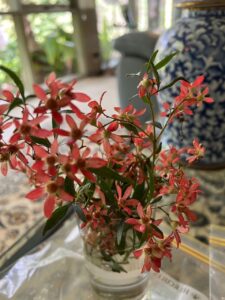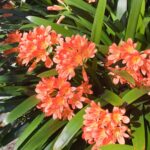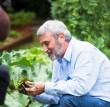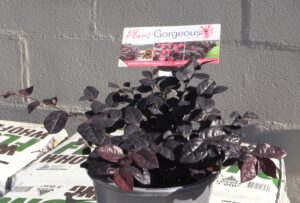
When to harvest
People these days are worried about buying fruit and vegetables and the chemicals that are on them.
The only way to be sure about what you’re eating is to grow it yourself. Growing your own fruit and vegetables is tremendously rewarding. However, knowing when the produce is ready for harvest can be a problem for many gardeners.
Tomatoes (Lycopersicon lycopersicum)
You’d all think, of course, the best thing to do is pick the tomato when it’s ripe and that’s true, the best flavour comes when the tomato’s ripe. But if you’re not spraying and if you’re in a fruit fly area and you pick tomatoes when they’re ripe, unfortunately they’ll be full of maggots. Before growing tomatoes, check if you’re in a fruit fly area, if you are, pick your fruit when fully grown but still green and let them ripen inside the house (fruit flies do not lay eggs in blossoms or young fruit). If you’re lucky enough to live in a non-fruit fly area, you can let them ripen a bit more on the vine for more flavour.
Parsnips (Pastinaca sativa)
Parsnips grow best in a crumbly, open soil. They are one of the few things that can be left in the ground, you don’t leave them in the ground long enough to go to seed and become too big and woody, but you can leave them over winter when growth is slow. If you do take them up to store them over winter, cut the leaves off and store them in the crisper section of the fridge. Don doesn’t like parsnips much!!
Bananas (Musa cultivars)
Most people would know when to harvest bananas, you pick them when they’ve still got a little bit of green on them but they’re starting to yellow. They’ll ripen very well once back in the kitchen. Bananas, like all ripening fruit, produce a gas called ethylene. This is a plant hormone, which stimulates further ripening. If ripe bananas are put into a bag with green bananas, ethylene from the yellow bananas will speed up the ripening of the green ones. Even a ripe apple will produce ethylene and help green bananas ripen.
At home, it’s probably best to pick them hand by hand (working from the top down) rather than by the whole stalk. A banana sucker produces fruit about 15-18 months after planting. After the fruit has been harvested the parent plant will die, and should be chopped down to make way for the new suckers that will take its place and produce fruit in the future.
Pumpkins (Cucurbita maxima)
A lot of people grow pumpkins and butternuts are really wonderful to grow. But when do you harvest them? They’re very easy. You basically wait until Autumn when the vine is starting to die off and more particularly, when the little stem leading down to the pumpkin fruit is starting to wither and goes brown. Butternut pumpkins will colour to an all over sandy yellow.
What happens when you’ve got surplus? You can swap them with neighbours or you can put them on the sunny roof of a corrugated iron shed, provided they are not wet at the bottom. This allows the skins to harden or cure. After several weeks the pumpkins can be moved to a cool, dry, airy spot.
Peaches and Nectarines (Prunus persica)
Do you want to know when peaches and nectarines are ripe? When they start to show their colour, once those orangey-red colours come, they’re ready for harvesting. They should be picked while they’re still a bit firm because once peaches and nectarines go ripe they go off very quickly. By the way, peaches and nectarines are the same plant, nectarines are just a ‘fuzz-less’ variety of peach that actually turned up as a bud sport once on a branch.
Citrus
Citrus are fabulous to have in the garden; beautiful shiny leaves, you can trim the tree into a lovely shape, they have attractive fruit, beautifully perfumed white flowers, what more could you ask for? It’s like an orange blossom festival in your own backyard.
Lemonade trees produce lemon-like fruit that are greenish-yellow but you can eat them almost from the point that they’re green.
If you look at Valencia oranges, they can be fully orange in colour but not ripe and certainly not ready to eat, the longer you leave them on the tree, the better. If unsure, try one and if it’s too sour, they need to stay on the tree longer.
With mandarins, once they start to colour orange, that is the time to eat them. If you leave them on the tree for too long, the flavour is quite bland.
With grapefruit and lemons, you can eat them when you like. The best lemon for most areas is the Eureka. In cooler zones maybe try the Lisbon or a Meyer.
Limes are really easy to grow, Tahiti is the main variety as long as you’re in not too frosty an area.
With fruit and vegies, there are some that ripen and you have to know when, and there’s others that don’t. For example, things like carrots, it’s not a matter of ripening, it’s a matter of what size would you like to eat them. With zucchinis, asparagus, lettuce and silver beet, you pick them when they’re young and sweet. If you wait too long, they’re inedible.
Lettuce (Lactuca sativa)
The main lettuce people would grow at home would be Iceberg, it has a heart and to check when to harvest, you need to gently squeeze the heart and when it is firm (almost rock solid) it’s ready. There’s no reason you can’t take young leaves from any lettuce as you need them. Cos lettuce never forms much of a heart and you would harvest the individual leaves much like you would with silver beet.









